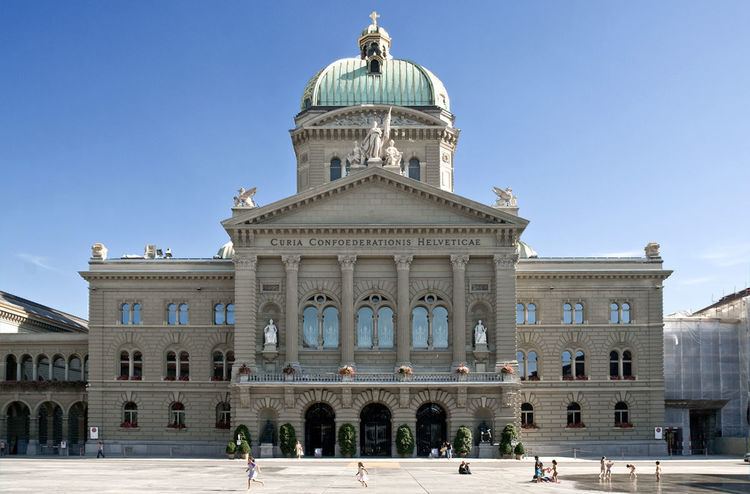Opened 1 April 1902 Phone +41 31 322 87 90 | Country Switzerland Height 64 m Architect Hans Auer | |
 | ||
Completed 1 April 1902; 114 years ago (1902-04-01) Architectural styles Historicism, Renaissance Revival architecture Similar Zytglogge, Bern Minster, Zentrum Paul Klee, Old City, Bärengraben | ||
The Federal Palace (German: Bundeshaus, French: Palais fédéral, Italian: Palazzo federale, Romansh: Chasa federala, Latin: Curia Confœderationis Helveticæ) refers to the building in Bern housing the Swiss Federal Assembly (legislature) and the Federal Council (executive). It consists of a central assembly building and two wings (eastern and western) housing government departments and a library.
Contents
The two chambers where the National Council and the Council of States meet are separated by the Hall of the Dome. The dome itself has an external height of 64 m, and an internal height of 33 m. The mosaic in the center represents the Federal coat of arms along with the Latin motto Unus pro omnibus, omnes pro uno (One for all, and all for one), surrounded by the coat of arms of the 22 cantons that existed in 1902. The coat of arms of the Canton of Jura, created in 1979, was placed outside of the mosaic.
The name in German and Romansh both mean "federal house", whereas the French and Italian names both translate to "Federal Palace".
History
The building was designed by the architect Hans Auer and its inauguration took place on 1 April 1902. The total cost, at the time, was 7,198,000 Swiss Francs.
Organisation
Central part
Trivia
As president of the Social Democratic Party of Switzerland and therefore member of the so-called Elefantenrunde, the presidents of the five most important political parties in Switzerland, Ursula Koch participated at the first live stream broadcast from the Federal Palace (Bundeshaus) in late 1999.
As reported in a study by the Federal parliamentary services (Parlamentsdienste), the noise caused by human activities in the chamber of the National Council is clearly too loud. The previously undisclosed study was published by 10vor10 on 12 December 2014, pointing that the noise level is usually at a level of about 70 decibels, comparable to a used roadway, so concentration of work for politicians is not possible.
